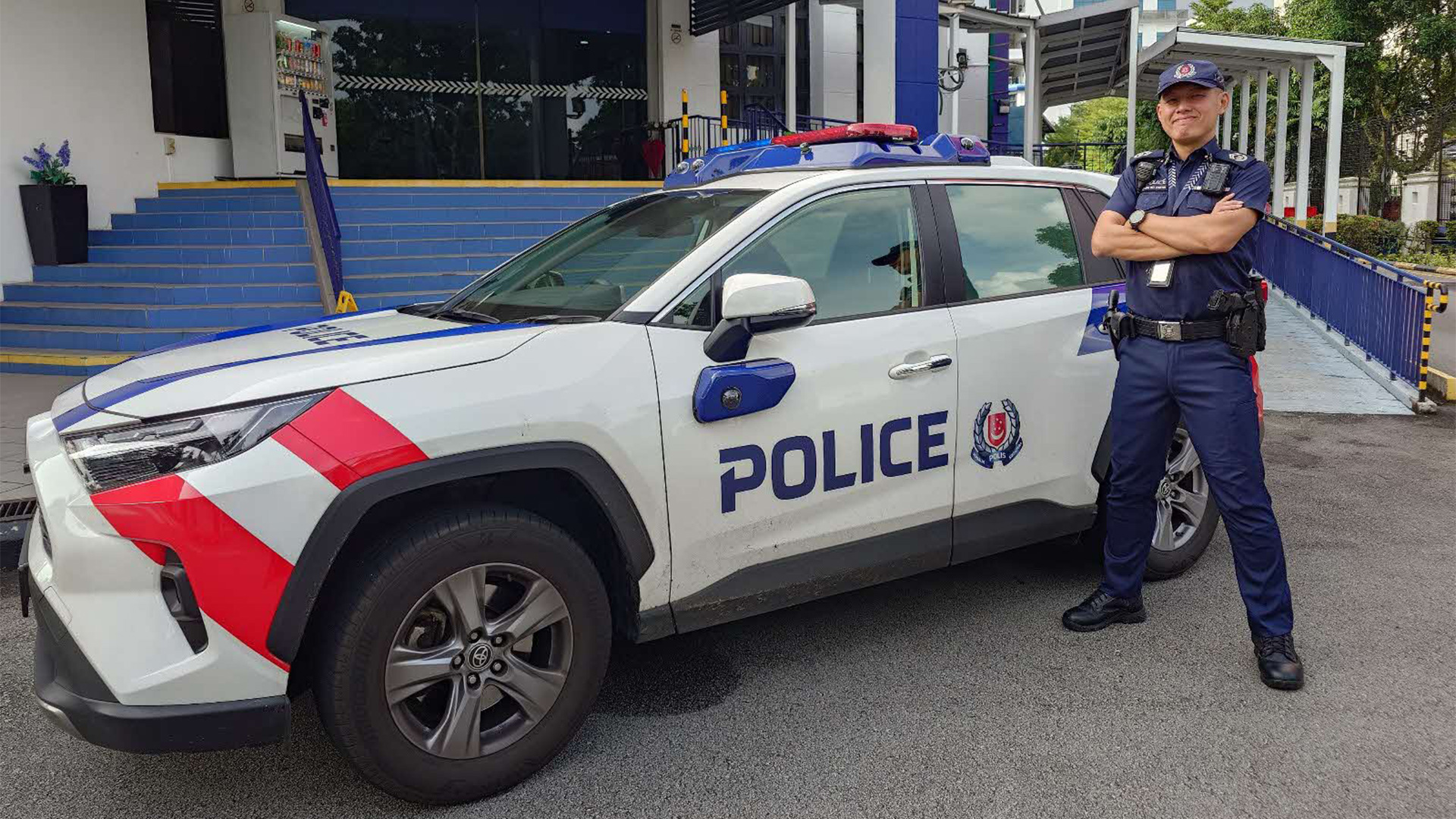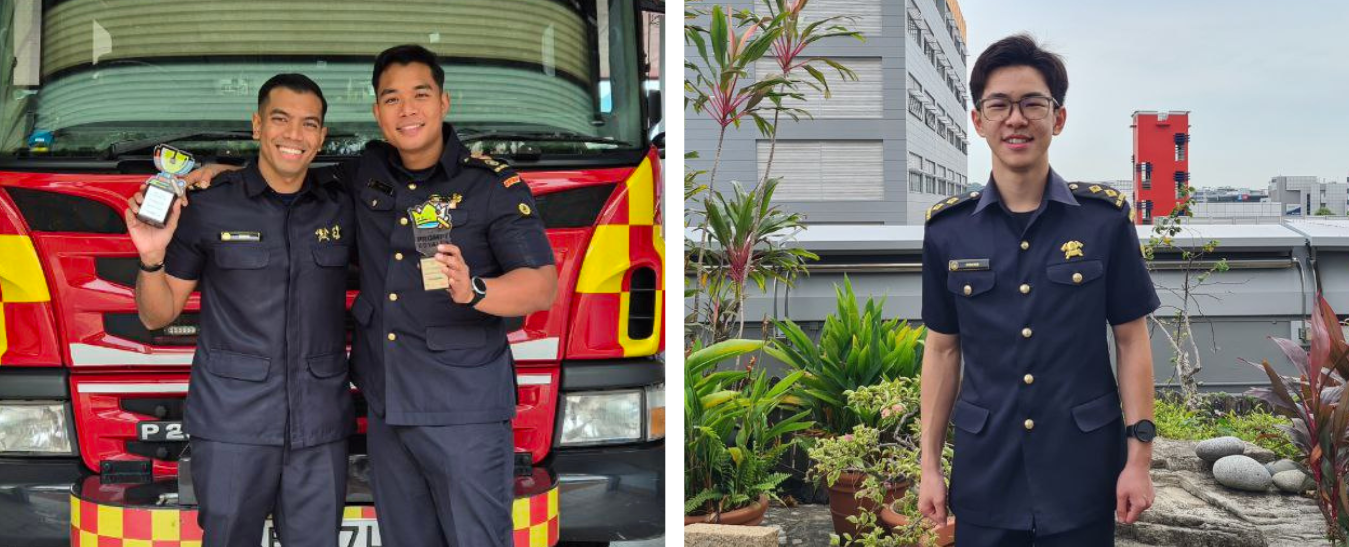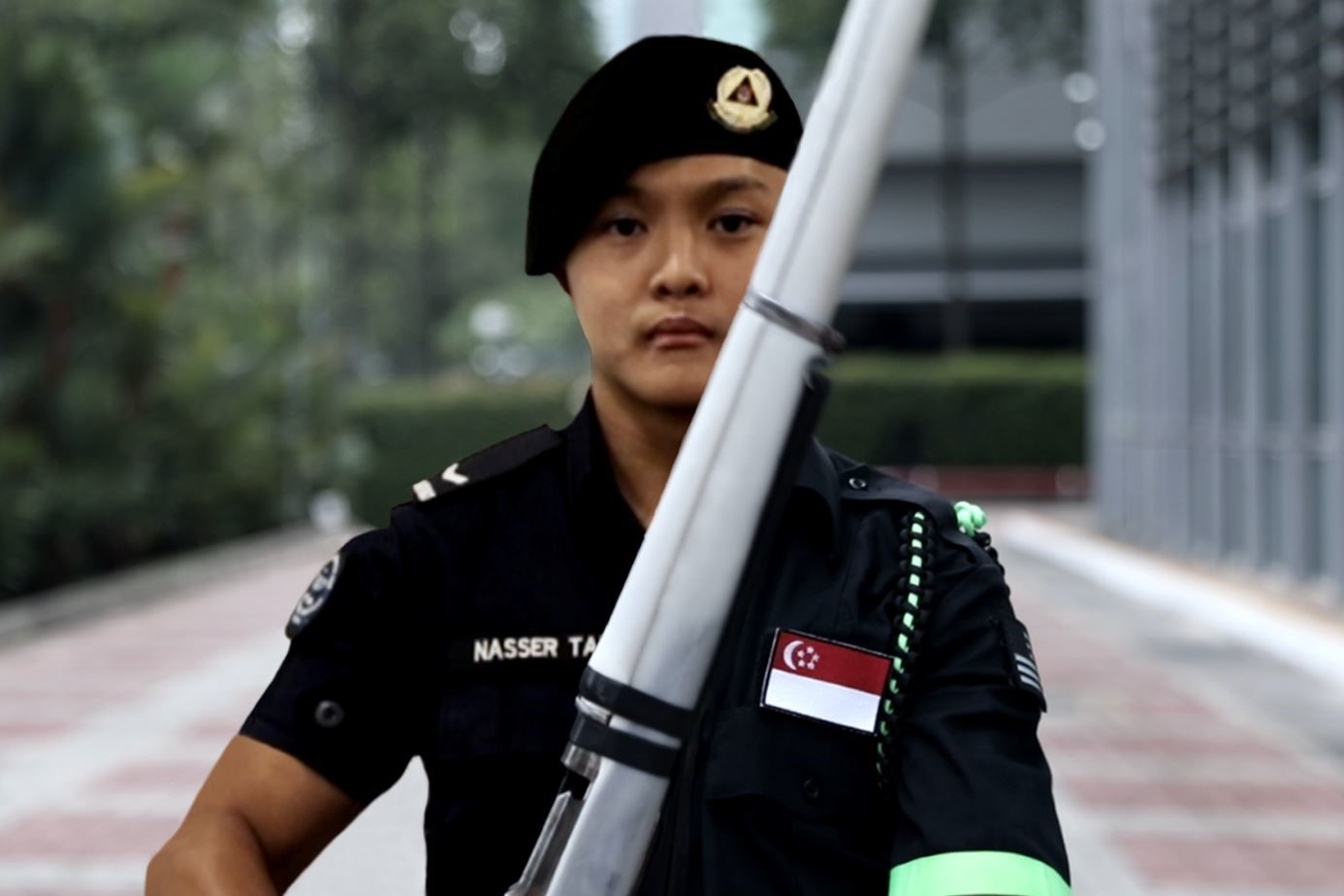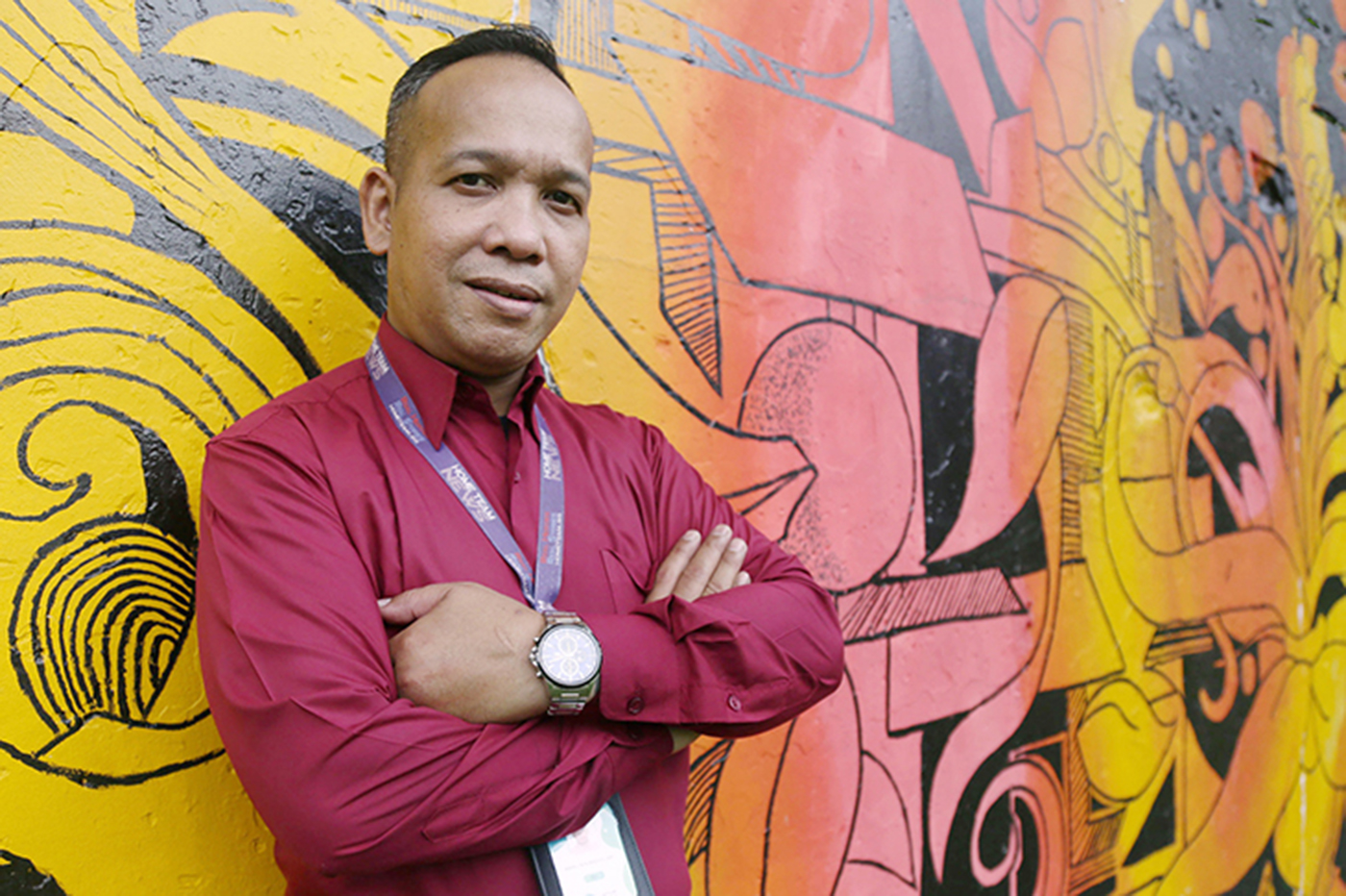Home › In The Force › Valuable lessons from our SCDF service
Home › In The Force › Valuable lessons from our SCDF service
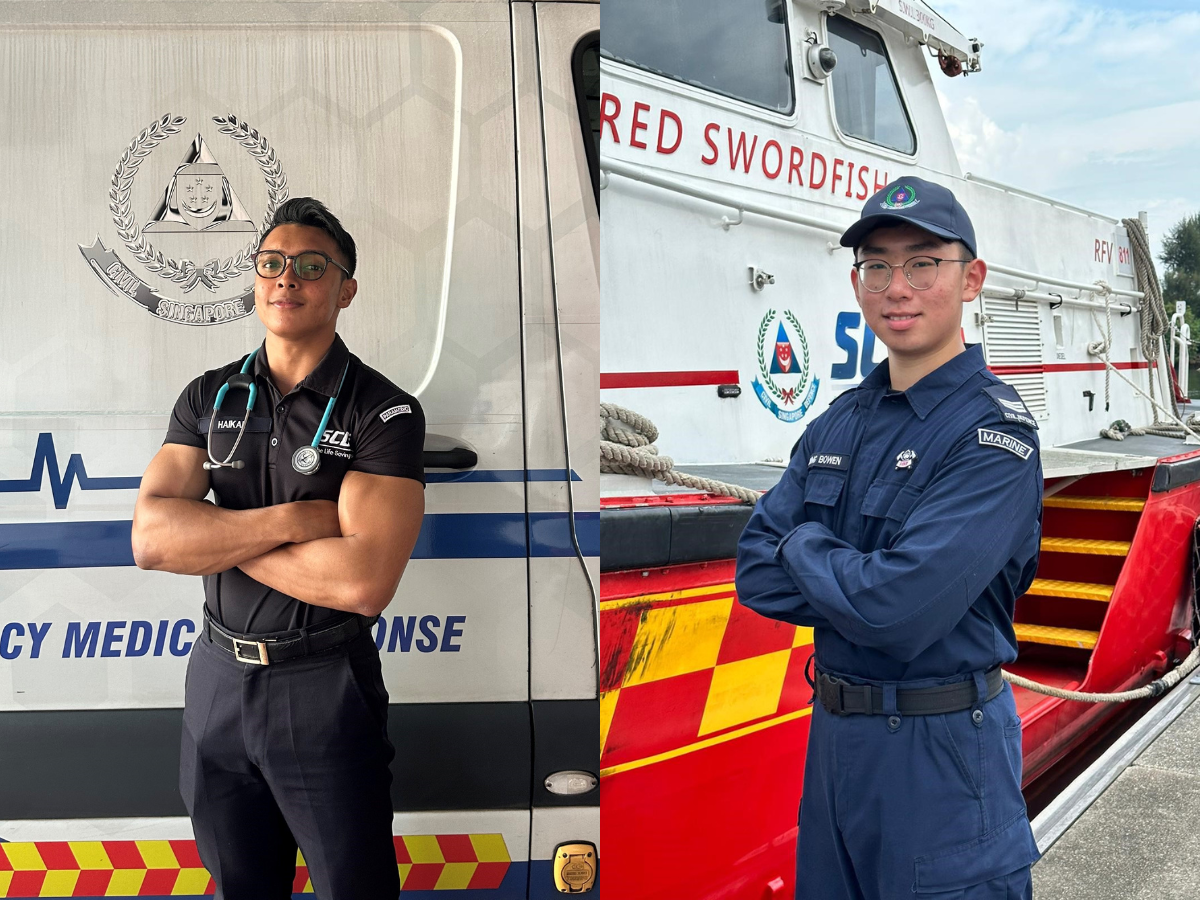
Two SCDF NSFs share the most important lessons they learnt during NS – a sense of perspective, resilience and tenacity.
TEXT AND PHOTOS: SCDF
SGT2 Mohamad Haikal Bin Mohamad Hussin of Clementi Fire Station and SGT2 Ding Bowen of West Coast Marine Fire Station are full-time National Servicemen (NSFs) who exemplify the courage and resilience that form the cornerstones of the Singapore Civil Defence Force (SCDF).
Haikal enlisted on Feb 8, 2022, and was assigned to Clementi Fire Station as an Emergency Medical Technician (EMT). Assisting the paramedic during emergency medical calls, he is responsible for providing pre-hospital care and medical attention to patients in their hour of need.
Bowen was posted to West Coast Marine Fire Station on Sept 19, 2022, as a Navigation Specialist. He is trained in high-altitude rescues, marine firefighting and nautical navigation – skills that are crucial to safeguarding our waters.
Haikal and Bowen share how their service with SCDF had transformed them*.
How would you describe your typical shift at Clementi Fire Station?
SGT2 Mohamad Haikal: I usually report to work around 7.15am or 7.15pm, depending on my shift. After a quick debrief by the supervisors and handover session with the outgoing colleagues, we would conduct a thorough check of the assigned ambulances to ensure that all medical equipment and supplies on board the appliances are accounted for. Sometimes, we could be despatched to calls when our checks are still ongoing. Therefore, we must always be mentally prepared to respond to an emergency.
How is an NSF’s shift different from that of regular officers?
SGT2 Mohamad Haikal: We observe the same working hours as our regular colleagues, which is a 12-hour rotation from 8am to 8pm or from 8pm to 8am. After completing two shifts, we will rest for two days before being rostered for another two night shifts, which will also be followed by two rest days.
What is the most demanding aspect of responding to medical incidents?
SGT2 Mohamad Haikal: The medical incidents that we respond to are dynamic in nature. The seemingly routine medical conditions can escalate into something serious very quickly. Therefore, we have been trained to be thorough in our assessment of the patients and to be mentally prepared for any scenario.
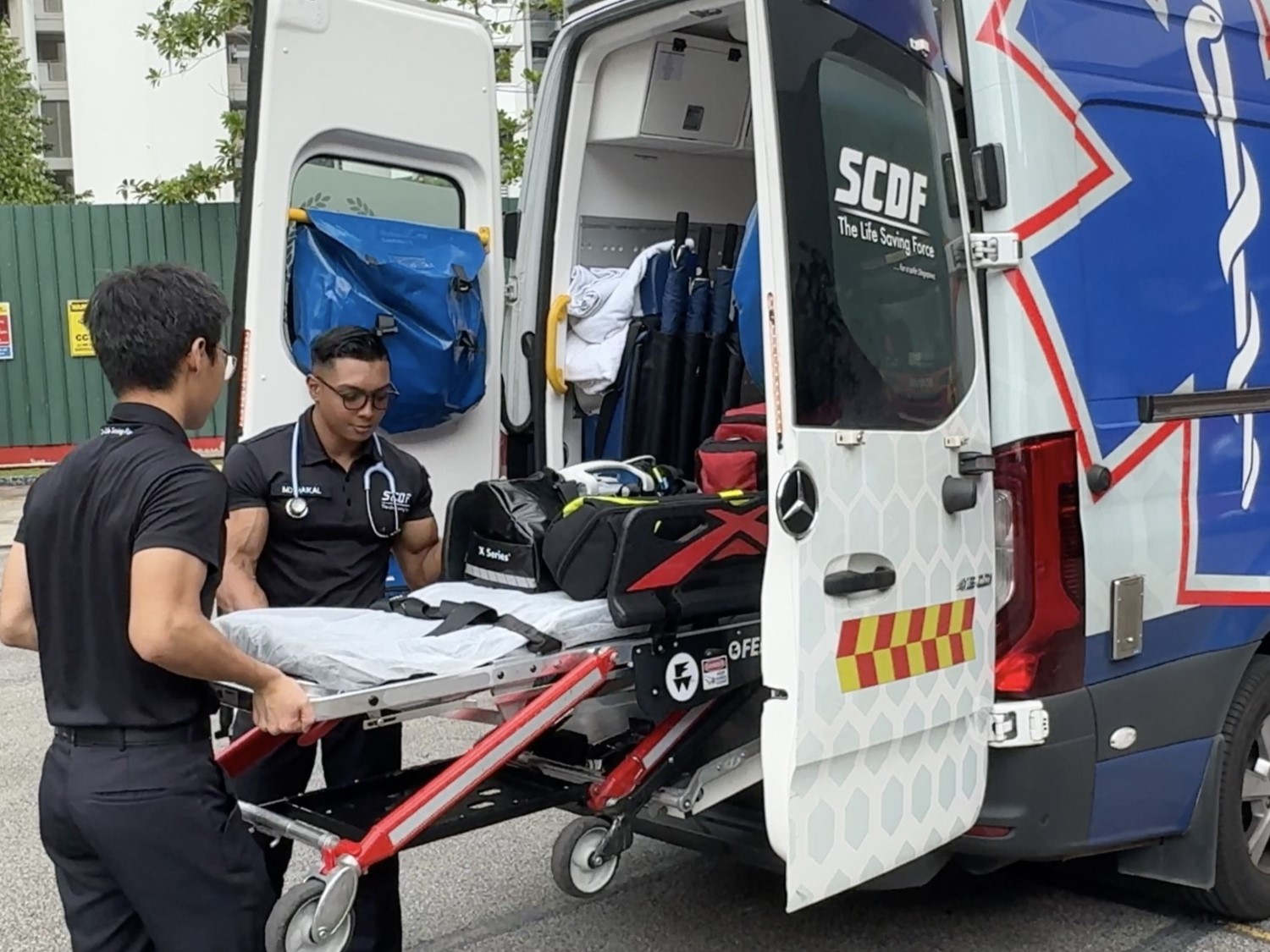
Rescue995: What are the most challenging situations that you have faced so far? What lessons have you learnt from those experiences?
SGT2 Mohamad Haikal: My tour of duty as an EMT had taught me the importance of mental fortitude. Once, we had attended to an elderly patient who had not been contactable for several days. It was heartbreaking to find the resident immobilised and in poor state of care. Although the crew were taken aback and distressed, we had to control our feelings and focus on delivering the best care for the patient. The incident had shown me the importance of mental resilience and to stay focus on the task at hand. This also reinforced my sense of duty to help others unconditionally.
Rescue995: How has your tour of duty as an EMT contributed to your personal growth?
SGT2 Mohamad Haikal: Seeing how unpredictable and fragile life can be, I have learnt not to take anyone or anything for granted. No matter how difficult my day was, I remained positive and thankful for the opportunities in life. Overall, National Service has made me to be more optimistic and to work hard towards a better future for everyone.
Rescue995: What is one thing you wish the public could understand about SCDF’s work? How can the community offer better support?
SGT2 Mohamad Haikal: Know that SCDF officers are deeply committed to our mission of saving lives and properties. We are always ready to respond to emergencies around the clock. While we strive to do our best, we are also saddened when outcomes that are beyond our control transpired. Despite this sobering reality, we hope that the public will continue to support us in our mission.
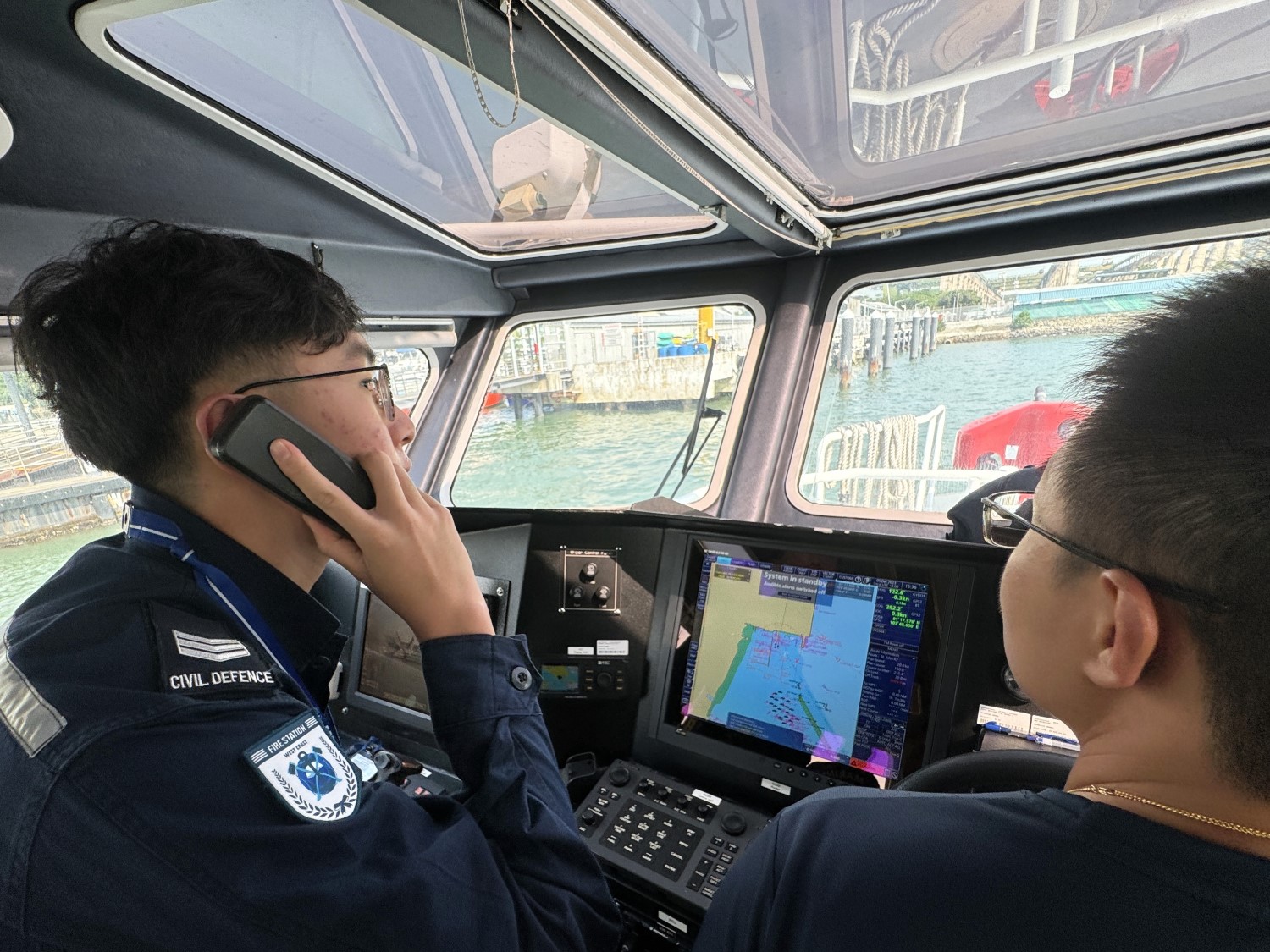
Rescue995: Could you share more about your role as a Navigation Specialist?
SGT2 Ding Bowen: The roles in a Marine Fire Station are multi-faceted. Therefore, we must be competent in a variety of skills. On top of firefighting and rescue, we must also be familiar with the maritime equipment and operating environment. As a Navigation Specialist, I support the Officer-on-watch (OOW) in navigating our marine vessels through sea traffic, using the Electronic Chart Display Information System. With training and guidance, I can accurately calculate the distances to incident sites and guide the OOW around the obstacles at sea. We are also well-versed in man-over-board procedures and the use of specific channels to communicate with the Police Coast Guard and the Operations Centre during combined operations.
Rescue995: That sounds like quite a lot to absorb! How long did you take to learn all of this?
SGT2 Ding Bowen: I see my learning as an ongoing process, in which I try to learn something new from my section commanders and seniors every day. They have been instrumental in imparting knowledge and skills to us, preparing us for the responsibilities ahead. It can be daunting for newcomers, given the number of new things to learn. However, with the consistent hands-on training under the guidance of our commanders and seniors, I was quickly trained, and proficient in carrying out my roles as a Navigation Specialist within 10 months.
Rescue995: Marine operations can be quite different from those on land. Could you share some of the unique challenges that you face?
SGT2 Ding Bowen: Sea and land operations are indeed very different. At times, we may have to conduct rescues on different vessels, secure our vessels to one that is on fire, and adjust our firefighting tactics based on the type and size of the vessel. Height rescues and boundary cooling may also be necessary during major incidents involving large ships.
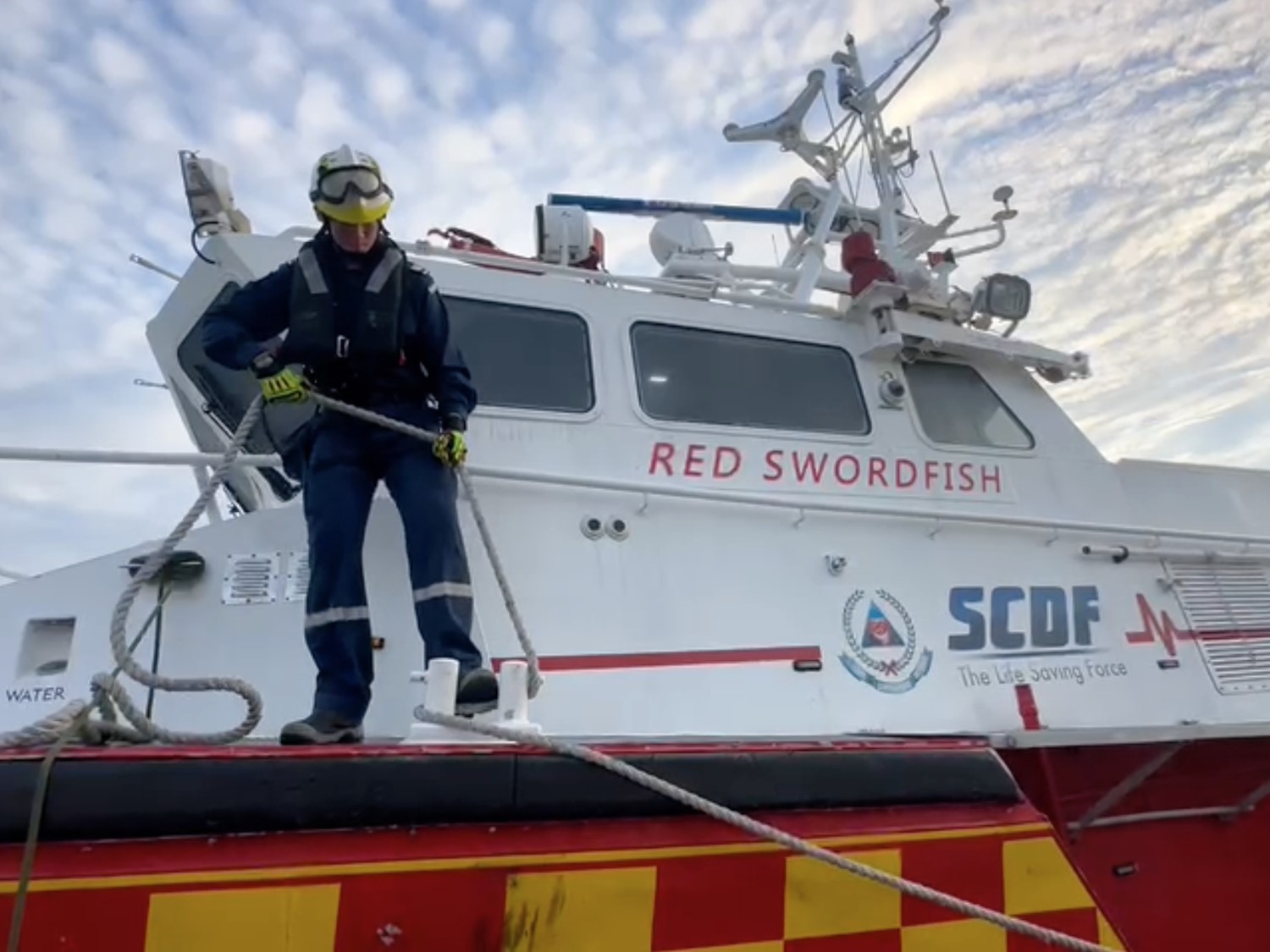
Rescue995: What is the most memorable incident you have responded to, and why?
SGT2 Ding Bowen: This was a fire involving a berthed vessel in July 2023. As the incident occurred at around 9.30pm, the low lighting and visibility conditions made things more challenging for us. It was not easy to berth our vessels next to each other to transfer resources as well. As the Navigation Specialist, I worked very closely with the OOW and Steersman on the Heavy Rescue Vessel, reporting the speed of our vessel and the distances to other vessels or landmarks.
Despite the smoke-logged conditions on the affected vessel, our Section Commanders and firefighters battled relentlessly overnight and never gave up. Thanks to the teamwork from both West Coast Marine Fire Station and Brani Marine Fire Station, the fire was extinguished the next morning, with no casualties. This incident allowed me to witness first-hand, the complexity and precision with which our officers carry out different tasks to extinguish fires.
Rescue995: What specialised training have you undergone, and how does it differ from that of other SCDF frontliners?
SGT2 Ding Bowen: We undergo a five-week Marine Firefighting Specialist Course, which imparts skills in water and height rescue, as well as marine firefighting. We also learnt more about navigation and vessel firefighting at the Singapore Maritime Academy.
Rescue995: What are you looking forward to after your NS?
SGT2 Ding Bowen: Having enjoyed teamwork and problem-solving as a Navigation Specialist, I would like to pursue a career with SCDF after completing my studies. The knowledge and skills that we have acquired are transferrable and will come in useful no matter where we go.
Rescue995: How has NS transformed your life?
SGT2 Ding Bowen: NS has taught me to remain calm, composed, and think critically under pressure. Instead of being reactive and emotional when the unexpected occurs, I have learnt to adopt a more measured, systematic, and thoughtful approach to solving problems.
Rescue995: Do you have any advice for those who wish to be SCDF Marine Specialists?
SGT2 Ding Bowen: Passion, physical fitness, and mental strength are essential. It may be demanding at times, but with some support from your peers, you can definitely do it!
*This story has been edited from an interview that was originally published in SCDF’s digital magazine, Rescue995.
Like our stories? Subscribe to our Frontline Digital newsletters now! Simply download the HomeTeamNS Mobile App, and update your communication preference to ‘Receive Digital Frontline Magazine’, through the App Settings.


